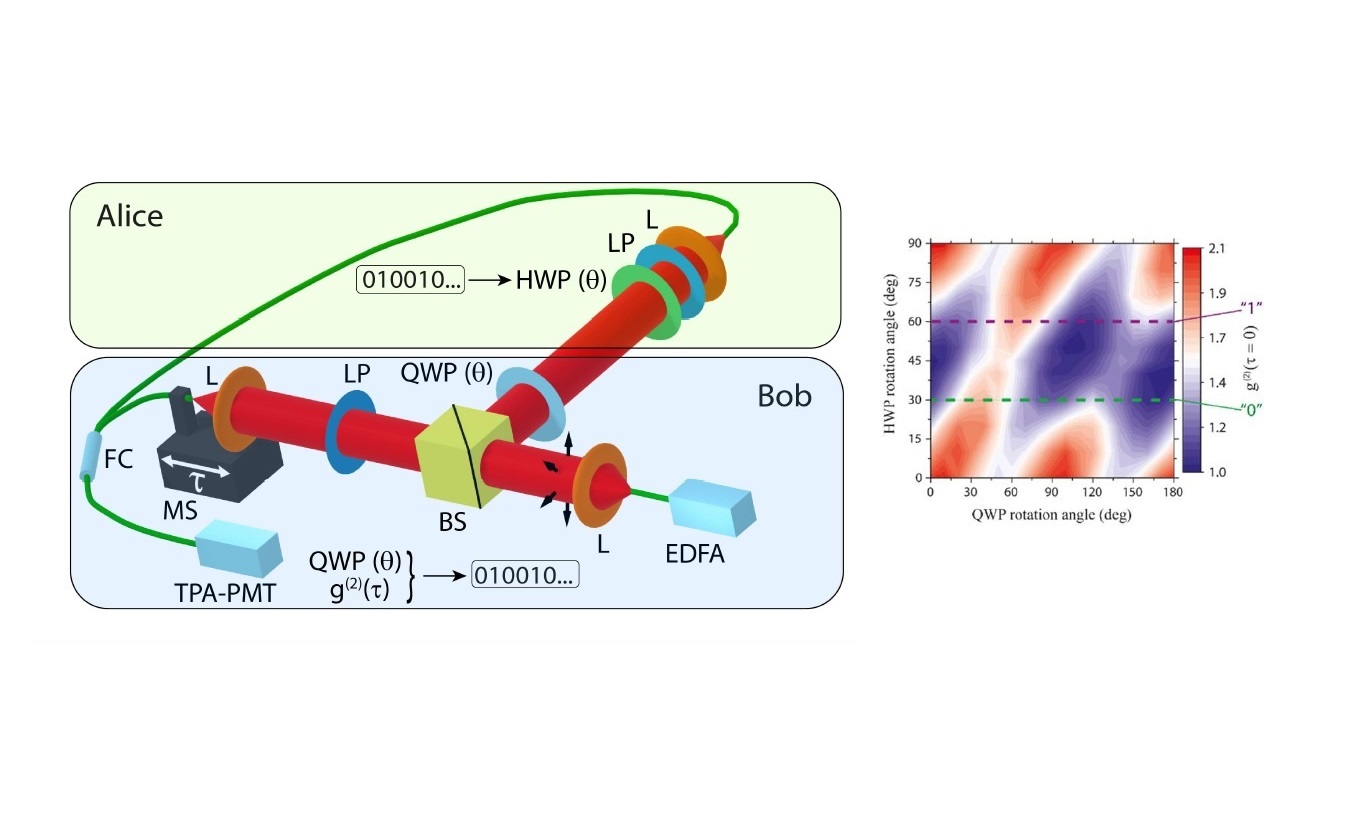April 05, 2020
The authors conceive and realize a novel approach for a message-encoding scheme between two parties, Alice and Bob, by exploiting the infinite number of polarization states of unpolarized thermal light on the Poincaré sphere together with their correlation properties to camouflage and recover a message, thus realizing ghost polarization communication.
Secure communication is currently an important and challenging topic for the global digital data exchange and ensures the interaction of Internet of Things devices as well as the private messaging between two parties. Parallel to the efforts made in the development of quantum computers, secure cryptographic systems are of recent interest and novel communication schemes such as quantum cryptography are developed. Apart from quantum cryptography, chaos communication is another area of research that aims to realize the secure transfer of information on the basis of physical laws by exploiting two chaotic lasers and their synchronization, thus providing a measure of security directly on the physical layer.
In a recently published Phys. Rev. Applied a group from Technical University of Darmstadt has pursued a different approach. Their idea is based essentially on three scientific pillars, secure communication, quantum optics in the spirit of Hanbury-Brown & Twiss photon correlations - here in the sense of ghost metrology schemes - and classical optics in the spirit of the Stokes formalism and the Poincaré sphere.
The authors conceived and realized an approach for a message encoding scheme between two parties, Alice and Bob, by exploiting the infinite number of polarization states of unpolarized thermal light on the Poincaré sphere together with their correlation properties to camouflage and recover a message, thus realizing ghost polarization communication (GPC), named in analogy to other Ghost Modalities (GM) which are based on photon correlations.
At first, they investigated the intensity correlation coefficient g(2)( ) of classical unpolarized broad-band amplified spontaneous emission (ASE) light emitted by an erbium-doped fiber amplifier (EDFA) at 1550 nm by manipulating its instantaneous polarization state utilizing various polarization optics in the beam paths of a Hanbury-Brown & Twiss like ghost polarimetry setup using ultra-fast two-photon absorption in a photomultiplier tube.
) of classical unpolarized broad-band amplified spontaneous emission (ASE) light emitted by an erbium-doped fiber amplifier (EDFA) at 1550 nm by manipulating its instantaneous polarization state utilizing various polarization optics in the beam paths of a Hanbury-Brown & Twiss like ghost polarimetry setup using ultra-fast two-photon absorption in a photomultiplier tube.
The observed polarization state modifications are not only in excellent agreement with an analytical model based on the Stokes vector dynamics and a Glauber protocol for g(2)( ) but they allowed to proceed towards the realization of a message encoding scheme. By changing the instantaneous polarization state using a half-wave plate, Alice encodes and subsequently transmits a message. The camouflaged message can be recovered uniquely by Bob measuring the second-order correlations of the modified instantaneous polarization state with his reference beam.
) but they allowed to proceed towards the realization of a message encoding scheme. By changing the instantaneous polarization state using a half-wave plate, Alice encodes and subsequently transmits a message. The camouflaged message can be recovered uniquely by Bob measuring the second-order correlations of the modified instantaneous polarization state with his reference beam.
By using the agreed-upon encoding table of the communication scheme, he is able to retrieve the bit values of the encoded message. This first proof-of-principle demonstration establishes a secure communication link between two parties directly on the physical layer based on polarization correlations of classical light. GPC complements quantum and chaos cryptography, respectively, thus fertilizing the exchange and discussion between these fields.
The pursued and exploited analogy to ghost imaging and ghost spectroscopy is expected to promote a deeper understanding, which may lead to other real-world applications using GM protocols. The head of the group Prof. Wolfgang Elsaesser states, “this is the first time that a GM not only offers postulated qualitative improvements against non-ghost metrology applications. GPC stands for a substantial unrivaled progress because GPC is only possible due to the recovery of a camouflaged polarization state through correlations. We expect that by the realization of this correlated photon modality not only new avenues for ghost modalities in general are opened but also new insight into polarization will be achieved, even more than 175 years after Stokes.“
Original source
Markus Rosskopf, Till Mohr, and Wolfgang Elsäßer, “Ghost Polarization Communication”, Phys. Rev. Applied 13, 034062 (2020);















